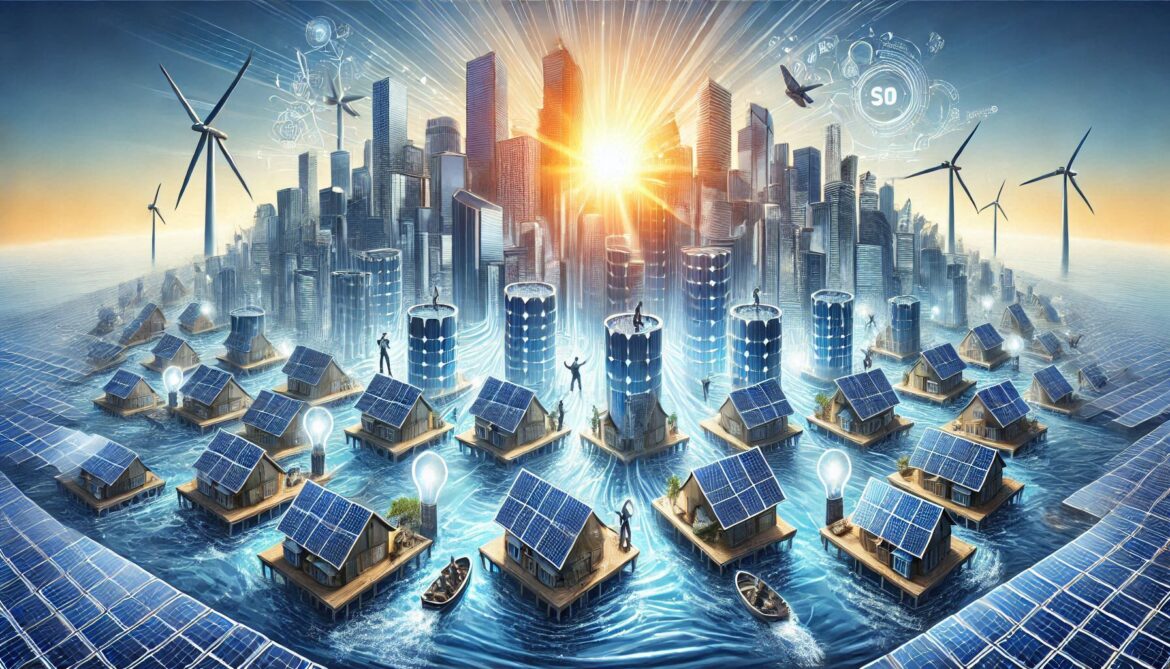
If you’re looking to maximize the energy output of your solar power system, understanding how to arrange your solar panels is crucial. One popular method is connecting solar panels in series. This arrangement can significantly increase the efficiency of your solar system, but it’s important to understand how it works and when it’s best to use.
In this article, we’ll break down everything you need to know about solar panels in series—from the benefits to a detailed step-by-step guide on how to make the most of this setup. Whether you’re a homeowner looking to upgrade your solar energy system or an enthusiast wanting to learn more, this guide will help you understand the ins and outs of solar panels in series.
What Are Solar Panels in Series?
When it comes to solar panel systems, the way you connect the panels determines how they work together. Solar panels in series means connecting the positive terminal of one panel to the negative terminal of the next panel. This setup increases the voltage of the system while maintaining the same current.
How Does Connecting Solar Panels in Series Work?
The power output of a solar panel depends on both voltage and current. By wiring solar panels in series, you combine their voltages while keeping the current constant. The total voltage is the sum of all the voltages of the panels, which means that connecting multiple panels in series can boost the overall output of the system.
For example:
- A single solar panel might produce 12 volts.
- If you connect three panels in series, the total voltage would be 36 volts (12V x 3).
This is an ideal configuration for systems that require a higher voltage to meet specific energy demands.
Benefits of Using Solar Panels in Series
There are several advantages to connecting solar panels in series, especially when it comes to energy output and system performance. Let’s dive into the key benefits:
1. Maximized Energy Output
By connecting solar panels in series, you effectively increase the system’s voltage, which can help optimize energy output, especially if your system is part of a larger installation.
2. Higher Efficiency in Conversion
Solar panels are more efficient when they are connected in series because the increased voltage allows the inverter to operate more efficiently. This is especially beneficial in areas with limited sunlight where boosting voltage can help produce more energy.
3. Simplified Wiring
In a series connection, you only need one set of wires running from the array to the inverter, which reduces complexity. Fewer wires mean less installation time and a neater setup.
4. Better Compatibility with MPPT
Maximum Power Point Tracking (MPPT) charge controllers work best with solar panels in series because they are designed to operate at higher voltages. This improves the overall efficiency of the system by ensuring the inverter receives an optimal voltage.
When Should You Use Solar Panels in Series?
While connecting solar panels in series offers several benefits, it’s not always the best option for every situation. Here’s when you should consider using a series connection:
1. When You Need Higher Voltage
If your system requires a higher voltage to match your inverter specifications, connecting solar panels in series is the ideal choice. This setup works best for large solar systems that need to supply power to a heavy load.
2. When Using MPPT Charge Controllers
As mentioned earlier, solar panels in series are highly compatible with MPPT controllers. If your setup includes an MPPT charge controller, wiring the panels in series will optimize performance.
3. When Space Is Limited
If you have limited space for solar panel installation but need to maximize the energy output, connecting solar panels in series allows you to boost the voltage without requiring a larger physical array.
Step-by-Step Guide: How to Connect Solar Panels in Series
Connecting solar panels in series is straightforward if you follow the proper steps. Here’s how you can do it:
Step 1: Gather Necessary Materials
To get started, you’ll need the following:
- Solar panels (the number depends on your setup)
- MC4 connectors or appropriate connectors for series connections
- Wires (ensure they are rated for outdoor use and are long enough to reach the inverter)
Step 2: Disconnect All Power Sources
Before you begin any electrical work, make sure that the system is completely disconnected from the grid and power sources to avoid any risk of electric shock.
Step 3: Connect the Positive and Negative Terminals
Start by connecting the positive terminal of the first solar panel to the negative terminal of the second panel. Continue this for all the panels in your series connection. The remaining positive terminal on the last panel will connect to the charge controller or inverter.
Step 4: Check Connections and Tighten
Ensure all connections are secure, tight, and properly insulated. Loose connections can lead to energy loss or even damage to the panels. Double-check everything before moving on.
Step 5: Connect to the Inverter or Charge Controller
Once all panels are connected, the final positive and negative terminals will connect to the inverter. This step is crucial as the inverter is what converts DC power from the panels to AC power for use in your home or business.
Step 6: Test the System
After installation, power up your system and monitor the voltage and current output to ensure the system is working properly. Use a multimeter to check that the voltage is higher than that of a single panel.
Common Mistakes to Avoid When Connecting Solar Panels in Series
While the process is relatively simple, there are a few common mistakes to avoid when wiring solar panels in series:
1. Incorrect Voltage Rating
Ensure that the total voltage from your series-connected panels doesn’t exceed the voltage rating of your charge controller or inverter. If it does, you may damage your equipment.
2. Using Mismatched Panels
Using panels of different types or wattages in series can cause performance issues. Always ensure the panels have similar ratings to avoid imbalances.
3. Not Checking for Shade
Shade on any single panel in the series can drastically reduce the performance of the entire array. Ensure that your panels are placed in a spot with full sun exposure for maximum energy output.
Solar Panels in Series vs. Parallel: Which is Best?
Now that we’ve covered how to connect solar panels in series, you might be wondering how this compares to connecting panels in parallel. Let’s break down the key differences:
Solar Panels in Series
- Higher Voltage
- Increased energy output
- Better for MPPT charge controllers
- Simple wiring
- Can be affected by shading
Solar Panels in Parallel
- Higher Current
- Voltage remains the same as a single panel
- Better for systems with multiple batteries
- Works well if shade is a concern
Depending on your needs, you can choose between solar panels in series or parallel for the optimal setup.
Why Solar Panels in Series Maximize Energy Output
In summary, connecting solar panels in series allows you to increase the voltage, making your system more efficient and better suited for larger solar power setups. Whether you’re aiming to power a home, a business, or a remote cabin, this configuration can optimize the energy output, providing you with reliable, sustainable power.
By following the steps outlined in this guide, you can confidently install solar panels in series and enjoy the benefits of a more efficient solar energy system. For more technology innovations and business insights, visit Read More.
Ready to maximize your energy output? Start connecting your solar panels in series today and unlock the full potential of your solar power system!


